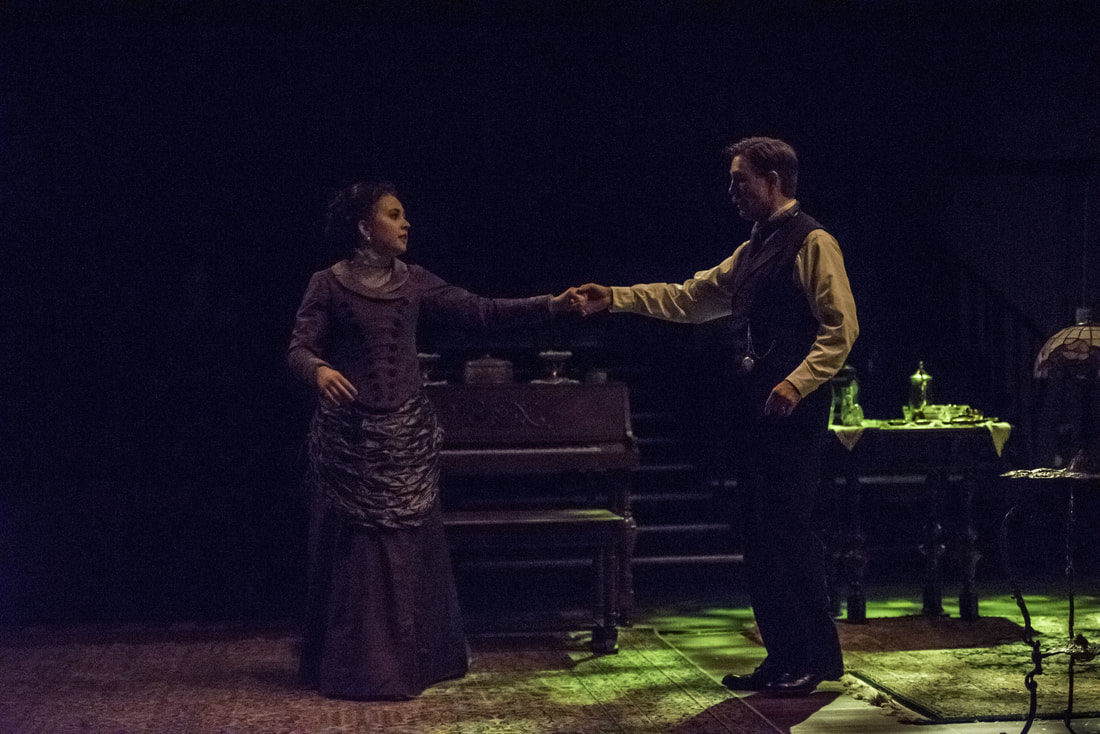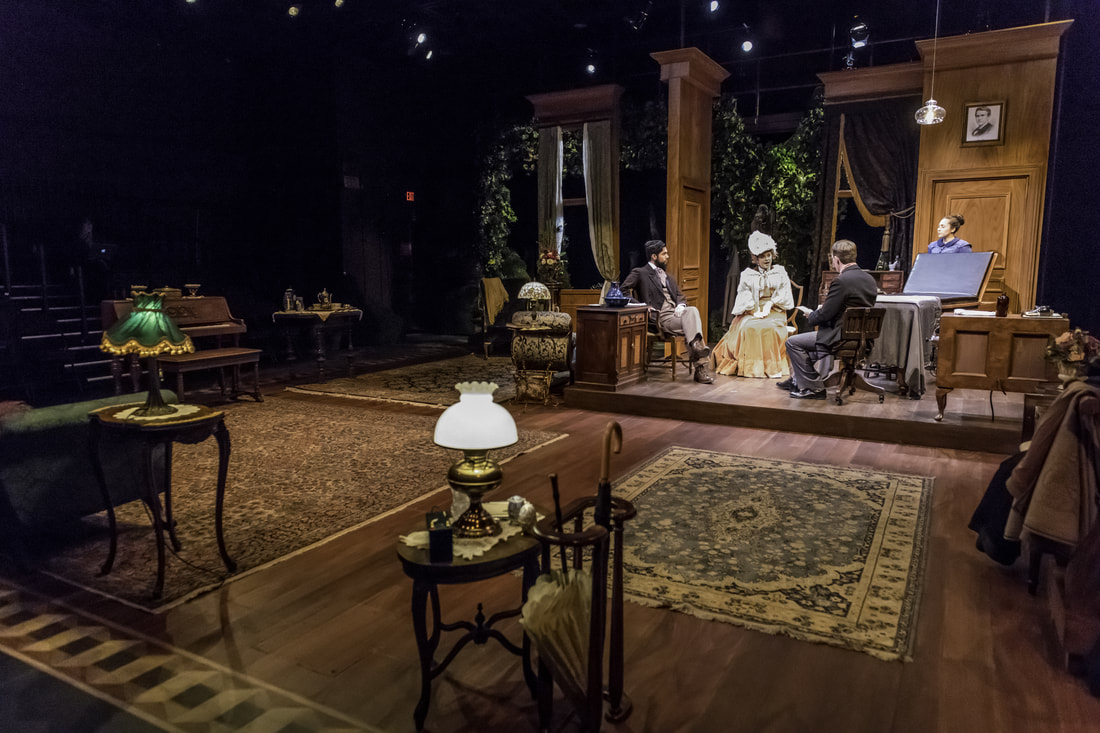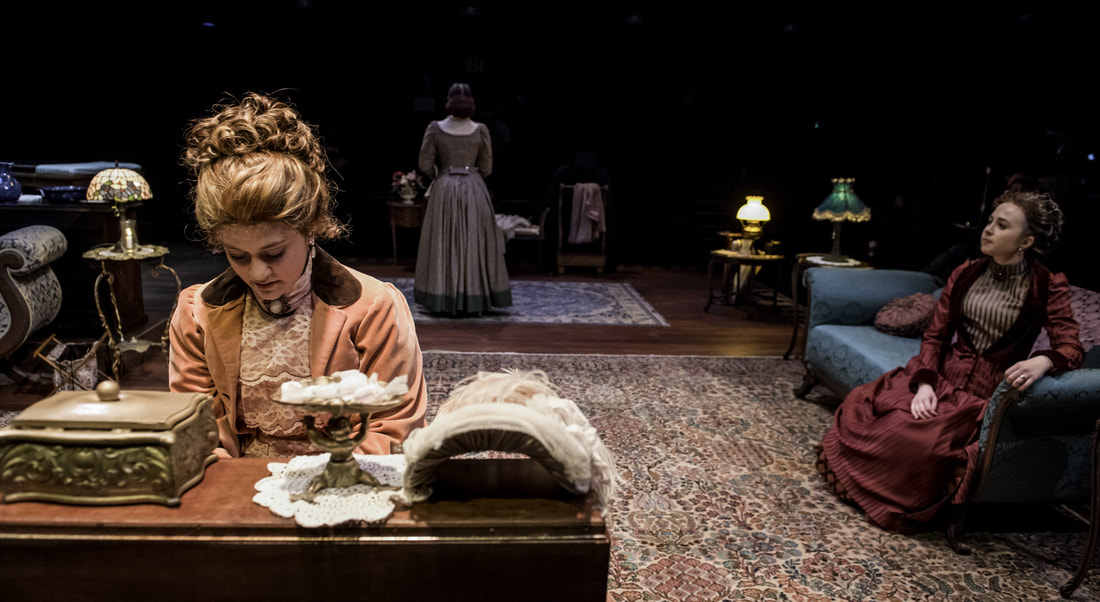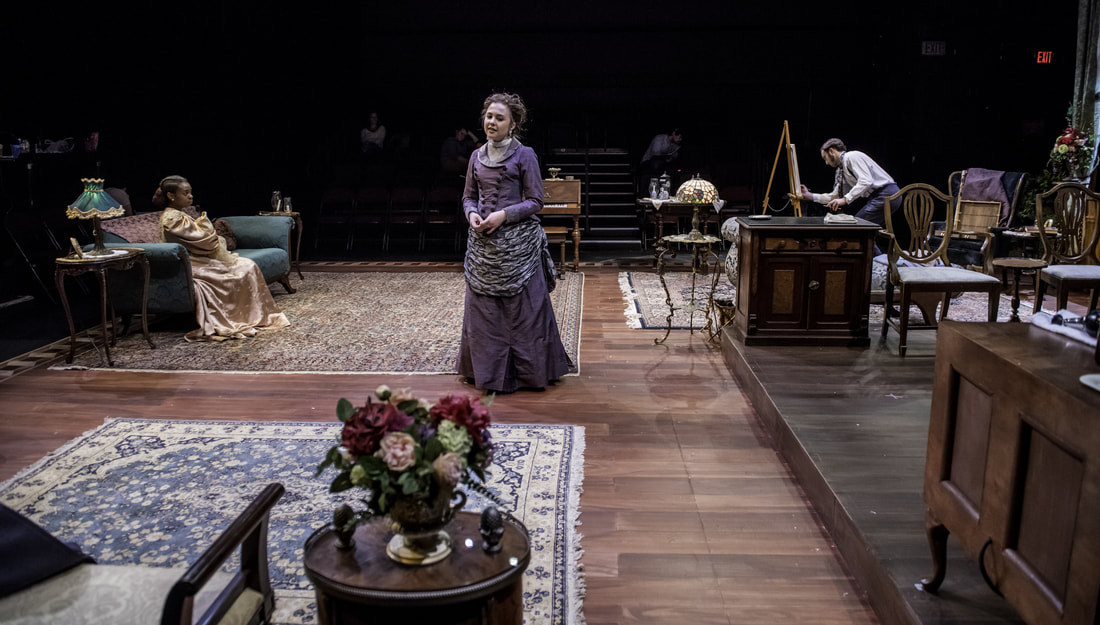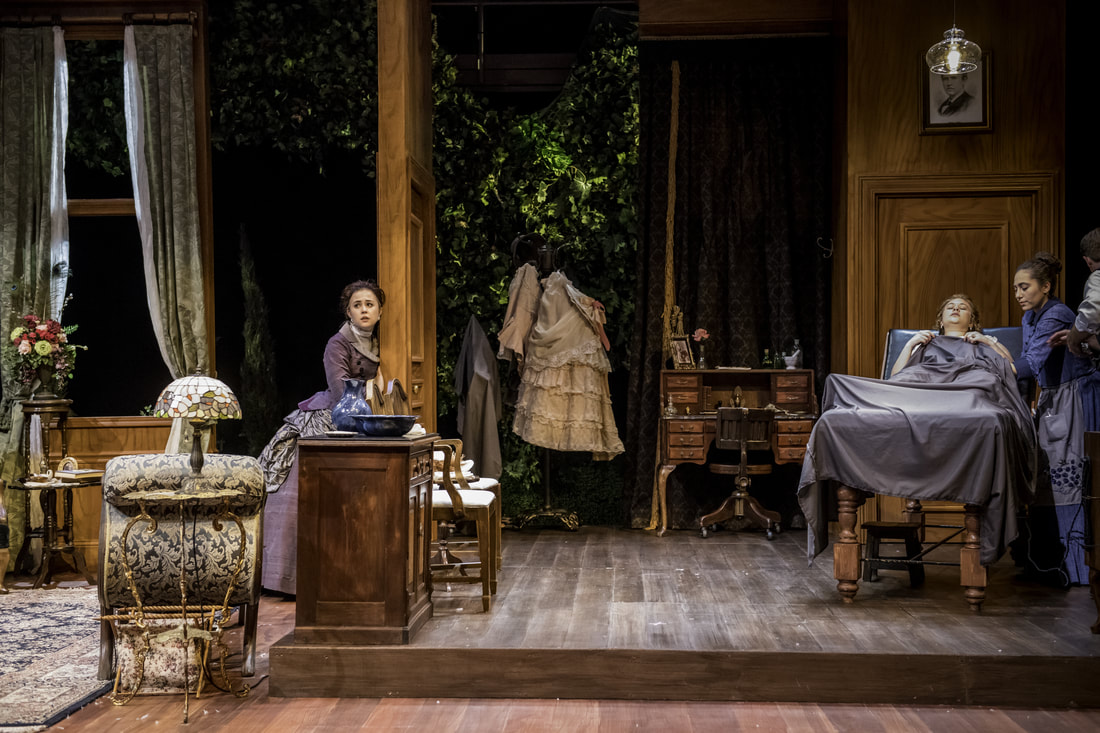In The Next Room (or The Vibrator Play)
by Sarah Ruhl
Directed by Lisa Gaye Dixon
by Sarah Ruhl
Directed by Lisa Gaye Dixon
|
Illinois Theatre Krannert Center for the Performing Arts - Studio Theatre October 26th, 2017 - November 4th, 2017 Scenic Design: Yue "Amber" Shi Costume Design: Nicole Zausmer Lighting Design: Michael Cummings Sound Design: Brandon Reed Props Design: Kira Lyon |
Photos taken courtesy of Darrell Hoemann Photography
|
About The Play
In The Next Room (or The Vibrator Play) is a provocative, funny, touching, and marvelously entertaining story about a young doctor and his wife. Dr. Givings is obsessed with the marvels of technology and what they can do for his patients. His wife, Catherine, is only a bystander in her husband's world - listening at the door from the next room as he treats his female patients. Dr. Givings is not sure exactly how the vibrators help the women he treats - but they do keep coming back. The only woman whose problem is not helped by the doctor is his own wife who longs to connect with him - but not electrically.
The sound design for the show was used to create soundscapes and let us know whether we were inside or outside the Giving's home. I did a lot of research of the scenery and wildlife of Yonkers, NY, which is where our story took place. I made sure to use the exact birds and sounds of the environment to really feel authentic. In addition, there were several practical sound effects in the show such as an offstage door slam, telephone, and most importantly, the many different vibrators used in the show. I hid a practical speaker inside of a desk near the operating table that sourced all the vibrator sounds (see below for how I created the sounds). I made sure to use the sound of pitch shifting to really get us the sound of the machine turning off and on, as well as speeding up and slowing down. This was all carefully choreographed with the actors to make the complicated looking cueing to be simplistic. Lastly, we made the decision to use period specific music to help the audience connect with the time period as well as provide emotional context going into the next scene. We went with impressionism classical music as it best fit the emotional context of the story as well as the time period.
The sound design for the show was used to create soundscapes and let us know whether we were inside or outside the Giving's home. I did a lot of research of the scenery and wildlife of Yonkers, NY, which is where our story took place. I made sure to use the exact birds and sounds of the environment to really feel authentic. In addition, there were several practical sound effects in the show such as an offstage door slam, telephone, and most importantly, the many different vibrators used in the show. I hid a practical speaker inside of a desk near the operating table that sourced all the vibrator sounds (see below for how I created the sounds). I made sure to use the sound of pitch shifting to really get us the sound of the machine turning off and on, as well as speeding up and slowing down. This was all carefully choreographed with the actors to make the complicated looking cueing to be simplistic. Lastly, we made the decision to use period specific music to help the audience connect with the time period as well as provide emotional context going into the next scene. We went with impressionism classical music as it best fit the emotional context of the story as well as the time period.
The Sound Design
|
|
|
|
|
